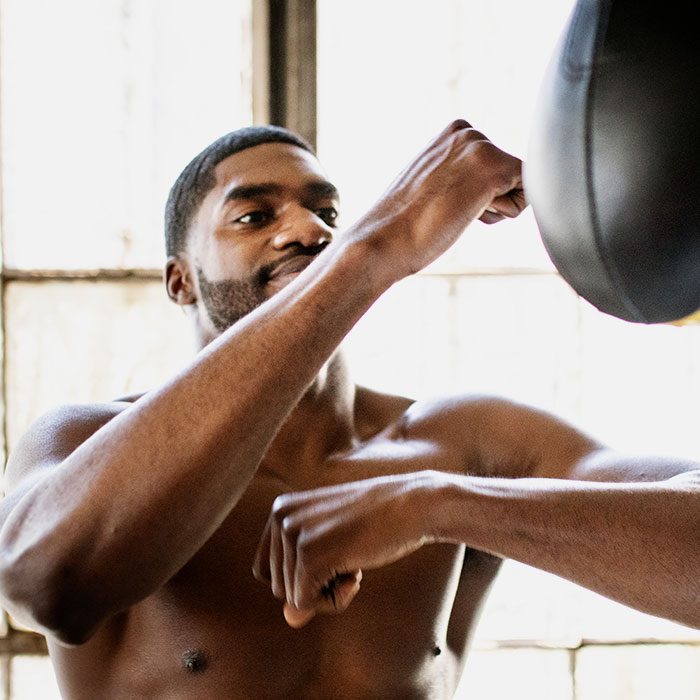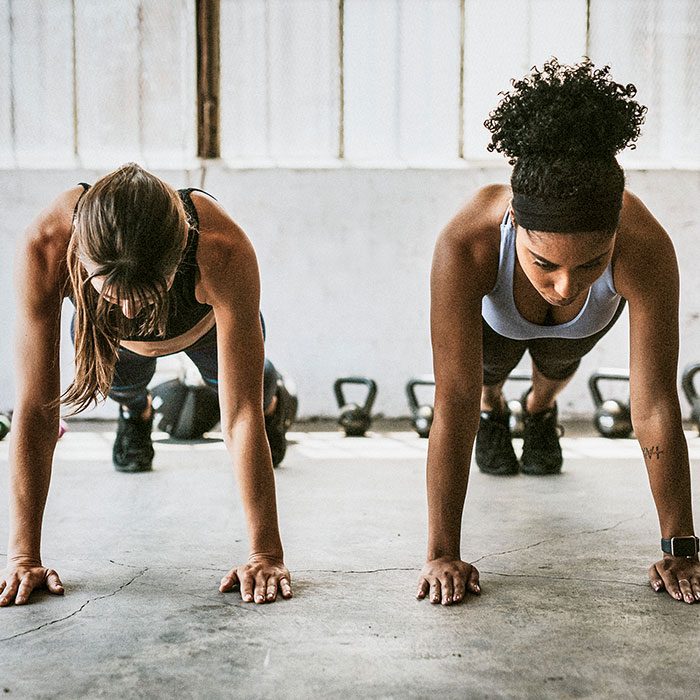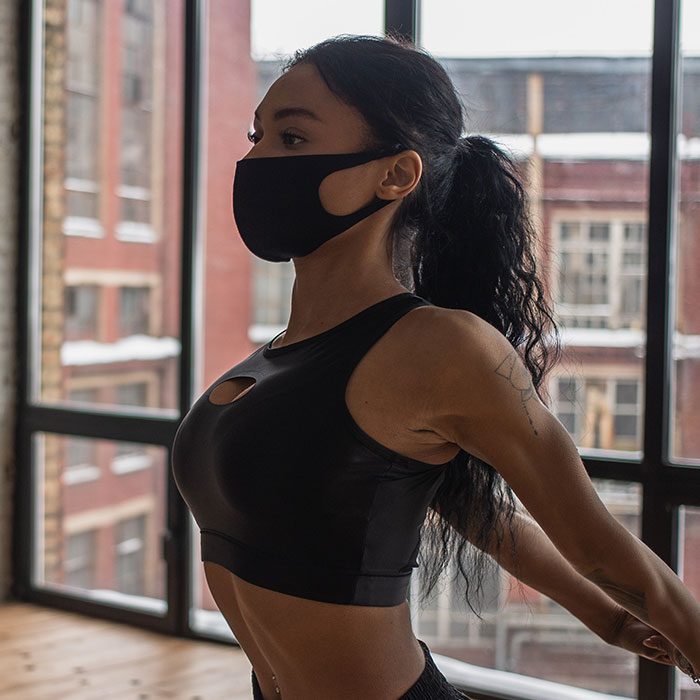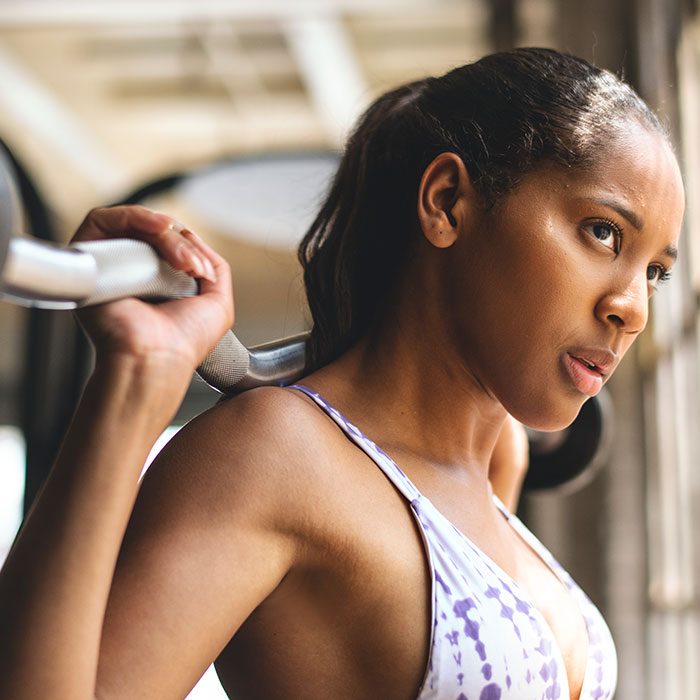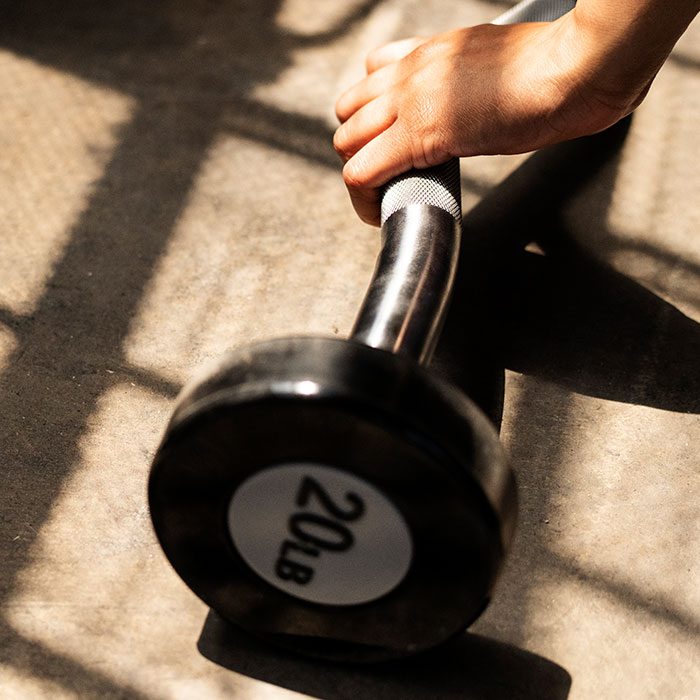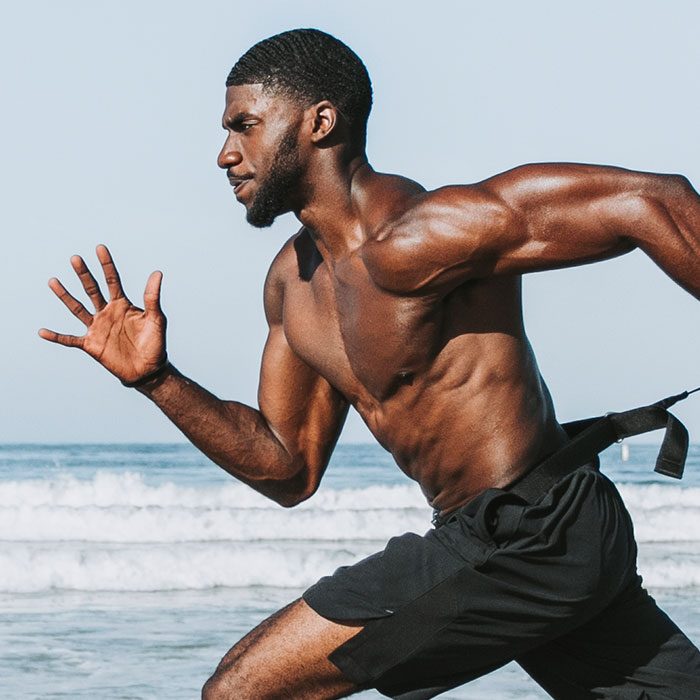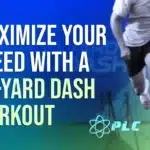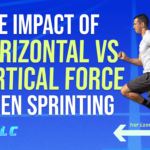Unlock Your Running Potential With A GAIT Analysis: Discover The Secrets To Your Best Performance
Looking to better understand every detail of your running to improve performance or for many address nagging injuries. An observational GAIT analysis is most likely what you are looking for. Most people see running as a very simple skill that everyone can and should be able to do, but what most runners do not realize is there are many different factors that impact overall speed, efficiency, alignment, ground force and much more. In the science world, we packed that all together into what we call your GAIT cycle.
What Is The GAIT Cycle And Why Is It Important?
The GAIT cycle is the manner that someone walks or runs. There are two primary phases of the normal gait cycle, the swing phase or the time where the foot is off the ground and the stance phase which is when the foot is on the ground. When the foot is on the ground there are three additional sub phases called foot strike, stance phase and toe off. Then the three sub phases of the swing phase are early swing phase, mid swing and terminal swing.
Understanding the GAIT pattern is important to isolate potential flaws within walking and running patterns to help athletes improve and mostly to address reoccurring injuries or even to avoid injuries in beginning runners. Many factors are almost impossible to notice with the naked eye but with the use of video cameras and motion analysis can become very clear and therefore properly treated. Which is why the study of specific pathologies have become more common within the running and track and field communities.
Is Getting A GAIT Analysis Expensive?

Depends on how in depth of an analysis you are looking to get. At The Performance Lab we provide an in depth analysis of the gait cycle both running as well as walking to identify specific joint angles, excessive motion, limited range of motion, motor control and much more. Additionally, we will provide exercises and drills to improve your gait pattern and get back to moving again.
We do this using a simple non-motorized treadmill, which means you must make the treadmill move, in combination with motion analysis to provide an in depth look at many factors when it comes to human movement. While there are many data points identified, the process is fairly easy to set up and therefore is neither expensive or time consuming.
There are certainly more complex observational gait analysis options out there that will be able to identify all types of gait abnormalities depending on how in depth you want to go. These usually have a longer analysis process and include many video cameras/force plates. Typically the treatment ends up being the same but the it depends on how the body moves and the injury history of the athlete would determine if this type of gait analysis would be necessary.
Who Typically Gets A GAIT Analysis
At The Performance Lab we have performed thousands of gait assessments to a wide range of different types of individuals but there are really two different pools of people who usually need it. People who are looking to improve their speed and want to work on their gait cycle to run faster for a particular sport or event. Or people who are experiencing reoccurring pain or injuries when running and want to be able to get a solution to the pain.
While the two may sound very different, there is really a lot of similarity in the approach to helping both type of athlete succeed. In general, a patient’s gait may have excessive motion which is causing a decrease in performance and overall speed, while also causing poor foot placement and therefore causing various stages of shin splints. So by properly addressing the ankle dorsiflexors and initial contact we could see improvement in running form as well as fixing the gait deviations to eliminate pain. Fixing one part of the gait pattern very often improves performance while decreasing pain simultaneously.
Do I Have To Be A Runner In Order To Get A GAIT Analysis?
Absolutely not. Most clinical gait analysis are actually done for the walking pattern. An in depth analysis of the simple walking ability and identifying muscle activity, joint angles, and other basics within the stance phase as well as swing phase can show a lot about someone’s moving capabilities.
Obviously for someone who is running a lot or playing sports there could be more benefits to the gait analysis of the running form. However, if someone is suffering a lot of joint or muscle pain that is preventing normal functionality. We would recommend gait analysis of human walking over running to avoid injuries.
Different Methods for Conducting Gait Analysis
The most common way to get a clinical gait analysis is through some sort of motion analysis. During the analysis there are countless data points being identified such as knee flexion, hip flexion, heel strike, foot drop, muscle activity and much more. Through the motion analysis the professional will be able to predict the use of different muscle groups based off what is found in the gait disorders.
Professional Gait Analysis
Gait analysis performed by experts in sports clinics, universities or biomechanics labs is a comprehensive way to assess the running form of an individual. It involves inspecting joint movement during walking and running for potential areas that could lead to pain or inefficient gait patterns. Motion capture systems can also be used to measure data about one’s gait pattern accurately and precisely with information gathered from their footwear, training program and history taken into consideration as well.
Typically the assessment requires between 30 minutes and an hour which gives ample time for both evaluation along with personalized recommendations given out when needed, all guided by specialist expertise allowing more informed decisions regarding your own run style and shoes selected.
Is There A Virtual GAIT Analysis Option?
Analyzing running form through video can be a cost-efficient and accessible approach for athletes looking to improve their performance, as well as reduce the risk of injury. To conduct DIY gait analysis with this method, runners should record footage from multiple angles (front, back and side views) in order to look for any biomechanical issues present.
Fortunately, there are several software applications which have been specifically designed for such self-video analysis – Ochy, Movaia, CP Gait Lab. OpenCap etc., allowing users an effective way of studying their stride patterning without having to break the bank on professional options. These services offer key insights into one’s running technique by finding discrepancies or abnormalities in different aspects within that particular style providing you insight into areas requiring focus or refinement.
By taking advantage of these tools available it is now possible to benefit greatly when it comes time improving your own individual runs. Plus getting help avoiding potential injuries resulting from due carelessness while utilizing incorrect body postures during said activity too!
Key Elements to Observe During Gait Analysis
Gait analysis involves carefully considering certain elements such as how your foot strikes the ground, stride length and cadence, and vertical oscillation time between contact with the ground. Observing these can help detect possible weaknesses in running form or injuries that may arise from it. Keeping track of thigh return for instance gives insight into whether hip flexors are working properly or not while heel pull reflects on effectiveness of leg muscles along with potential risk for injury.
It is also necessary to be aware of trunk movement, posture and chest position during gait analysis since this assesses core muscle performance which would reflect on upper body’s capacity when running efficiently towards becoming a better runner overall. Examining these particular aspects allows you to make decisions regarding changes needed in order to improve run technique. Reducing the possibility of getting injured unintentionally when going out for a jog/run.
Foot Strike Patterns
There are many different foot strike patterns that cause problems both locally (in the areas in close proximity to the foot) as well as globally (everywhere else in the body). The most common foot strike patterns that cause problems are:
- Heel strike
- Excessive pronation when the foot lands
- Excessive hip flexion or landing with the foot too far infront of the hip
- Too much plantar flexion or extension at the ankle joint during foot strike
- Poor posture during initial contact of the foot
All of these lead to various types of pain and injuries but the two that have the biggest impact on the body are the first two and they are the most common as well. These typically do not need motion analysis to be able to identify but it does help to make it clear to the client/athlete what is going on and how to fix it. In case you are wondering I made a video for you to fix this immediately.
The other common foot strike issue has to do with excessive pronation during the stance phase which just means landing without much control of the lower limb. Typically when this happens we see the knee and hip out of alignment with the foot and ankle. People who are more at risk for this, typically have flat feet or really limited dorsiflexion in the ankle joint. Over time when running or walking with excessive pronation leads to higher risk of shin splints, knee pain, hip impingement, spinal cord injury and much more. All from a inefficient human gait, which is why it is so important to correct quickly.
Stride Length and Cadence
Another key part of the gait pattern is the stride length as well as the cadence. When describing the two phases of the gait cycle, the cadence has more to do with the swing phase because it is how fast the leg is swinging when running. Most gait abnormalities can be seen during the swing phase and the human motion happening while the foot is in the area. A few common issues we see during the swing phase are:
- Excessive hip extension when the foot is too far behind the hip after plantar flexion.
- Poor gait speed which refers to the speed of the leg.
- Hip Hiking which refers to the hip in one leg raising due to limited hip flexion capabilities.
- Smaller step length/step length or limited amount of distance per step, usually caused
- Excessive anterior pelvic tilt usually caused from tight hip flexors and weak core.
While many of these sounds very different because of the joints they are impacting the individual’s gait pattern between these 5 issues are pretty similar. The motion analysis used during a gait assessment is probably most valuable in being able to identify key issues in the swing phase and gait speed that impact the athlete’s performance as well as risk for injury.
Toe Off And Ground Contact Time
The last critical moment of the gait pattern is the ground contact time or stance phase as well as the toe off. During this time the body is stabilizing the foot, knee and hip with muscle activity through the hip abductors, hip extensors and ankle dorsiflexors. There are many ground reaction forces being distributed through the leg during the stance phase. It is important for there are no excessive body movements in the lower extremities such as tibial rotation or poor push off mechanics or else the speed of the runner will suffer significantly.
This is why a proper gait analysis is critical in understanding the two critical phases of gait disorders, terminal stance and terminal swing. When gait abnormalities occur effecting the weight bearing muscle activity there can be major impacts to human movement. If you feel there are issues within your gait pattern we highly recommend you seek out a professional to get a motion analysis of your mechanics to get you back to full capabilities. Here is a link to find out more about our gait analysis.
How Gait Analysis Informs Shoe Selection

Gait analysis plays a vital role in choosing the correct type of running shoes. Different levels of stability, cushioning and support are necessary to align with an individual’s biomechanics, while also minimizing injury risks. Speaking, there are three classifications – neutral for those who don’t pronate excessively, cushioned designed for more lightweight runners, and stability which provides extra help against foot rolling outwards too much when striking the ground during strides.
Finding just the right shoe can make or break your overall running experience – it has to fit perfectly as well as provide enough performance-boosting benefits so that you reach all goals set forth in training plans successfully without any harm coming along! With proper understanding of gait patterns and one’s own movements when on feet, decisions about supportive footwear will be made confidently resulting in plenty enjoyment from jogging activities.
Types of Running Shoes
Different types of running shoes can help optimize a runner’s performance based on their foot shape and gait. Neutral shoes feature an unobstructed view of the entire foot while stability trainers provide extra support for runners with overpronation, and motion control models are ideal for those with flat feet or more intensive pronation problems. Understanding these shoe categories allows one to select the best footwear that is specifically tailored to their particular style and needs as they run.
By choosing proper fitting footwear suited to your feet structure, you’ll be able to ensure maximum comfort during training runs no matter what challenges may arise in terms of terrain or road conditions.
Finding the Perfect Fit
When it comes to selecting the perfect pair of running shoes, there are many factors that should be taken into account. Comfort and individual preference are paramount in this process, as they will determine cushioning support desired for a specific running surface and style. Foot biomechanics like width and arch height can have an important impact on how comfortable runners feel while out on their run. Individuals with high arches typically need additional padding or shock absorption whereas those who experience low arches may benefit from wearing supportive shoes to reduce overpronation impacts. By considering all these elements together you can find a shoe option that contributes positively towards your overall performance goals whilst giving maximum comfortability throughout each stride of every single jog!
Gait Retraining: Tips and Techniques for Improving Your Running Form

Optimizing running form is a key component of gait retraining that can help runners maximize their performance and minimize the risk for injury. Through addressing common issues in posture, stride length, flexibility, and strength imbalances specific to each individual runner’s needs, these adjustments can promote improved efficiency within one’s economy when running. Regularly incorporating targeted exercises to strengthen muscles or increase mobility into regular training regimens should be done as part of an overall approach towards developing better technique on the track/trail. Doing so will ultimately provide lasting benefits not only by helping protect against any potential injuries but also by allowing every runner to reach their desired level of performance more safely too!
Addressing Common Gait Issues
Good running form is essential for good performance and reducing the risk of injury. Common gait issues like insufficient arm swing, excessive vertical translation or overstriding can be addressed through specific exercises and adjustments to posture. Research shows that when runners take an overly long stride, they are more prone to various injuries such as patellofemoral pain syndrome, iliotibial band syndrome, and tibial stress fractures. To tackle this issue one should focus on fast-paced foot movements directly beneath hips while increasing forward lean with improved hip flexibility – all will lead toward increased coverage area without overextending your steps beyond safe lengths. Implementing these techniques improves both efficiency in runningni9ngas well protection against potential harm from excess striding, ultimately enhancing overall security during training sessions too!
Strength Training and Flexibility After A Gait Analysis
Strength training and stretching can help enhance running form by addressing muscle imbalances, increasing joint mobility, and providing stability. To gain the most benefit from these exercises, they should be done a minimum of two to three times each week for optimal gait improvement.
Common strength-training workouts are squats, lunges or planks as well foam rolling followed up with core strengthening exercises that will promote greater posture while expanding range of motion thus aiding balance. To increase power when it comes time to run towards your performance goals.
Including such activities into one’s regimen is key for appreciating significant advances forward toward enhancing running technique along with improving general speed objectives too!
Working with a Running Coach For GAIT Changes

Hiring a running coach offers individualized support to improve running performance, implementing gait analysis results and creating tailored training plans. The cost for this service ranges between $75-$500+ depending on the length of time you need to retrain your body and running mechanics. Most people after getting a gait analysis end up spending between $100-150 for a GAIT analysis that comes with motion analysis, customized exercises and drills as well as an in depth breakdown on what needs to improve. For many this gait assessment is invaluable to the athlete’s long term development. Find out more about it here:
The expert advice from a professional can be used to detect any biomechanical imbalances or weaknesses in one’s stride length, foot strike pattern, posture and cadence while also recognizing potential injury risks related to form/mechanics when developing their plan accordingly. Working with a specialist offers insight into how best optimize your technique as well as general confidence within your progression towards peak performance levels!
Summary
Gait analysis is a powerful tool that can revolutionize running by helping to maximize performance, reduce the chance of injuries and optimize overall economy. With an understanding of its science-based principles and applying findings from conducting it into your training program, you will be able to tap into optimal potential whether just starting out or being a seasoned marathoner. Gait analysis provides helpful guidance for attaining goals as well as enjoying better runs free from injury risks.
Frequently Asked Questions
Is gait analysis worth it?
For experienced runners, gait analysis may not be needed. For those new to running, it can help prevent injury by identifying the optimal shoe type and stride for their foot. An investment in a running gait analysis could assist these new runners as they look to develop an efficient style of running.
What are the 5 types of gait?
Gait is a type of movement and there are five common types: spastic, scissors, steppage, waddling and propulsive. Each has its own distinct characteristics that can be used to identify the pattern in individuals.
What is a normal walking gait?
A normal gait is a regular, alternating motion of the trunk and limbs which enables advancement in terms of where gravity’s center lies. This rhythmical action can usually be developed by 4-8 years old.
What is a 3 dimensional gait analysis?
Gait analysis in three dimensions is an advanced method to measure precisely how someone runs, jumps and walks. With the help of a force platform, this data provides a comprehensive assessment which involves tracking motion from all angles.
How often should I undergo gait analysis?
Gait analysis should be done at least once a year to keep track of any alterations in the running form and address potential problems related to it. This helps ensure that all aspects concerning one’s technique with regard to their running are being monitored efficiently.


